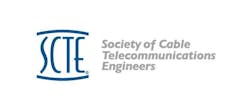The SCTE has approved five standards that are part of the DOCSIS 3.1 set of specifications.
- SCTE 220-1 2016, "DOCSIS 3.1 Part 1: Physical Layer Specification," builds upon the previous generations of DOCSIS specifications (commonly referred to as the DOCSIS 3.0 and earlier specifications), leveraging the existing media access control (MAC) and physical (PHY) layers, but with the addition of a new PHY layer designed to improve spectral efficiency and provide better scaling for larger bandwidths (and appropriate updates to the MAC and management layers to support the new PHY layer). It includes backward compatibility for the existing PHY layers.
- SCTE 220-2 2016, "DOCSIS 3.1 Part 2: MAC and Upper Layer Protocols Interface," builds upon the previous generations of DOCSIS, leveraging the existing MAC and PHY layers, but with the addition of a new PHY layer designed to improve spectral efficiency and provide better scaling for larger bandwidths and appropriate updates to the MAC and management layers to support the new PHY layer. It includes backward compatibility for the existing PHY layers.
- SCTE 220-3 2016, "DOCSIS 3.1 Part 3: Cable Modem Operations Support System Interface-Specification," defines the operations support system interface (OSSI) requirements for the cable modem.
- SCTE 220-4 2016, "DOCSIS 3.1 Part 4: CCAP Operations Support System Interface Specification," defines the requirements necessary for the configuration, fault management, and performance management of the cable modem termination system (CMTS) and the converged cable access platform (CCAP) system. The intent of the standard is to define a common, cross-vendor set of functionality for the configuration and management of CMTSs and CCAPs.
- SCTE 220-5 2016, "DOCSIS 3.1 Part 5: Security Specification, describes security services for DOCSIS communications and provides operators with tools to secure the provisioning process of cable modems and protect cable modem users by encrypting traffic flows between the modem and the CMTS.
In other SCTE standards news, the American National Standards Institute has approved ANSI/SCTE 230 2016, "Recommended Practice for Proper Handling of Audio-Video Synchronization in Cable Systems." The Recommended Practice specifies proper procedures for the measurement of and maintenance of Audio-Video Synchronization (commonly known as "lip sync") through various aspects of a cable system, including the headend and distribution architecture and devices.
The standards are available at http://www.scte.org/SCTE/Standards/Download/SCTE/Standards/Download_SCTE_Standards.aspx.
